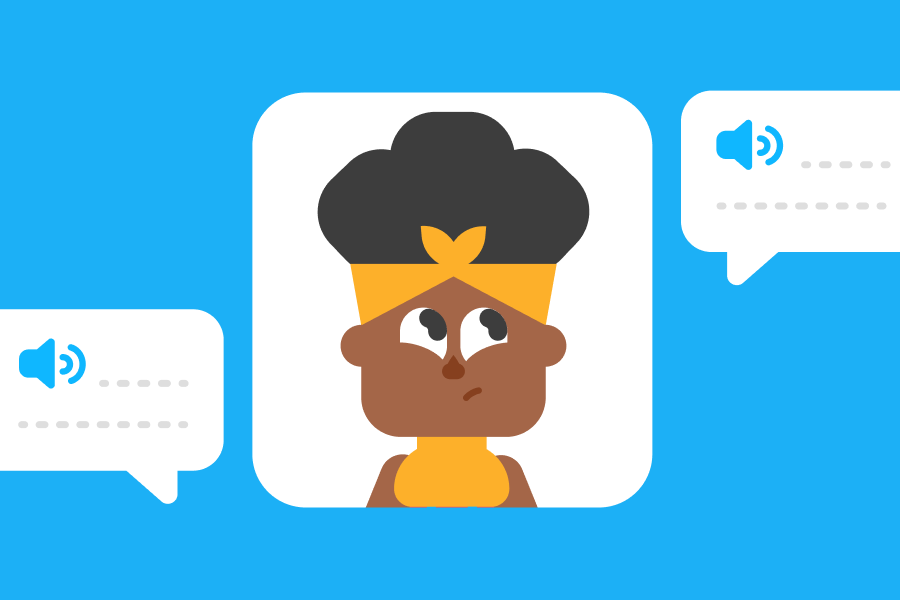This is the second of four posts about the most important skills for a language learner: reading, listening, writing, and speaking. Each week, we'll focus on a different skill to understand how it works, the best way to learn it, and how you can practice it! This week our focus is on listening.
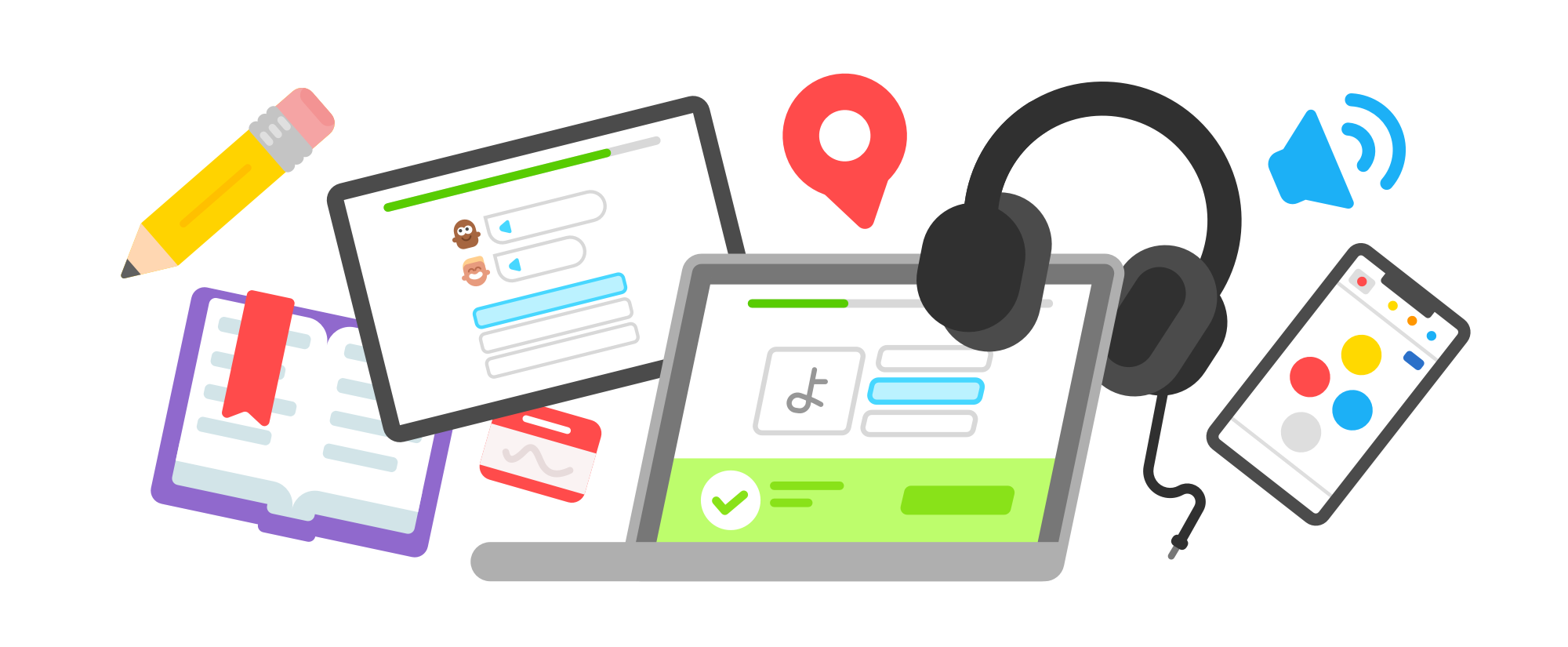
Listening to the language you're learning can now happen nearly anywhere: we're almost always just a few taps away from hearing news broadcasts, music, and podcasts in any language! Technology has also made it easier than ever before to listen to actual speakers of the language, either engaging with each other in movies and TV or talking directly to you in language exchanges and video calls.
Learners often report listening to be one of the most challenging—but most rewarding!—language skills to learn. After words are spoken, they disappear right into thin air, so learners like to be ready to hear language, and hear it right, the first time. Listening practice often happens in personal interactions where you're building a relationship with the speaker, so learners can also listen out for cultural information in what people say and how they say it (like accents!).
In this post we dive into how we teach listening at Duolingo, what the science says about how listening works, and the best ways for learners to practice it.
Duolingo's all-star lineup
To practice listening, our courses include different kinds of audio exercises—be sure to turn your sound on! We scaffold, or structure, our listening exercises to gradually get you used to listening and understanding, without relying on reading. This helps you build the skills you need to listen to music, FaceTime with friends who speak the language, and watch your favorite gamers on Twitch! To start listening like a pro, we encourage you to make use of all these tools in Duolingo courses:
- When lessons introduce new words, you'll see them written, to help you make connections between the writing and how the language sounds. As you progress, you'll get more audio exercises without any text at all to help train your ear.
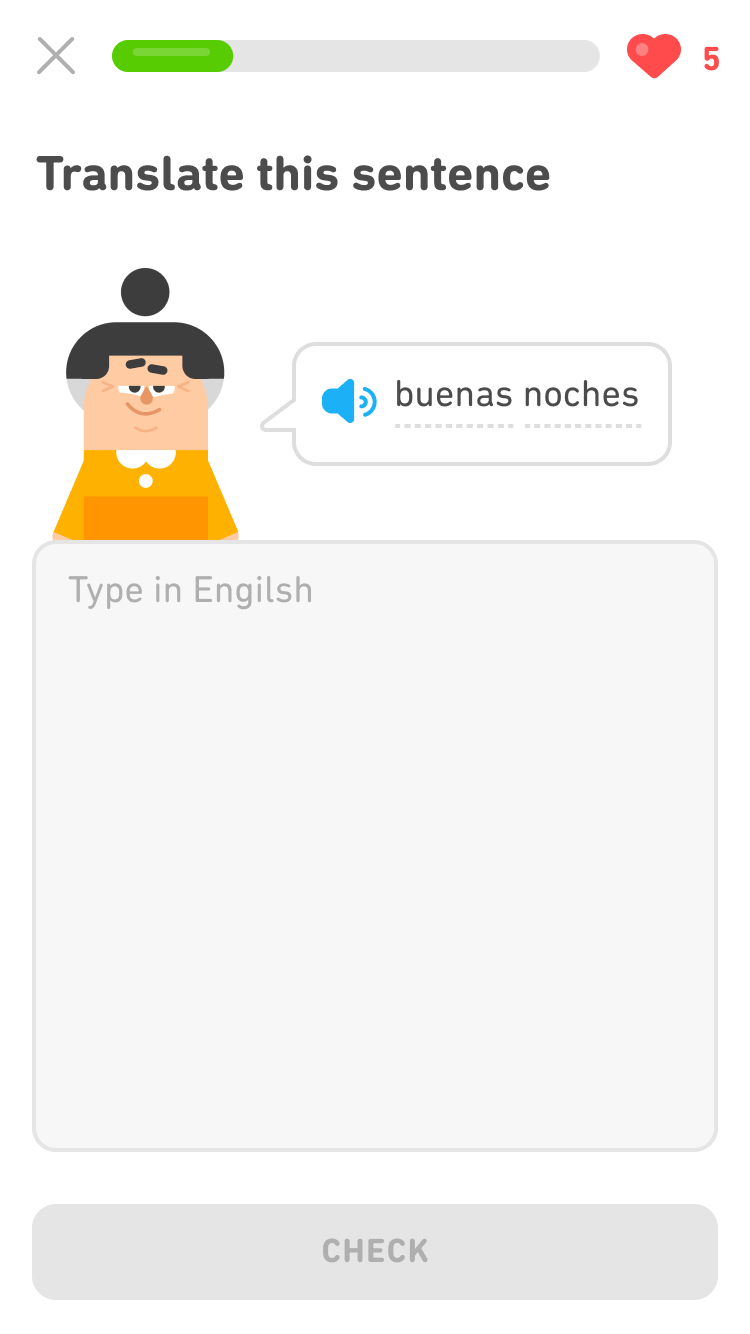 |
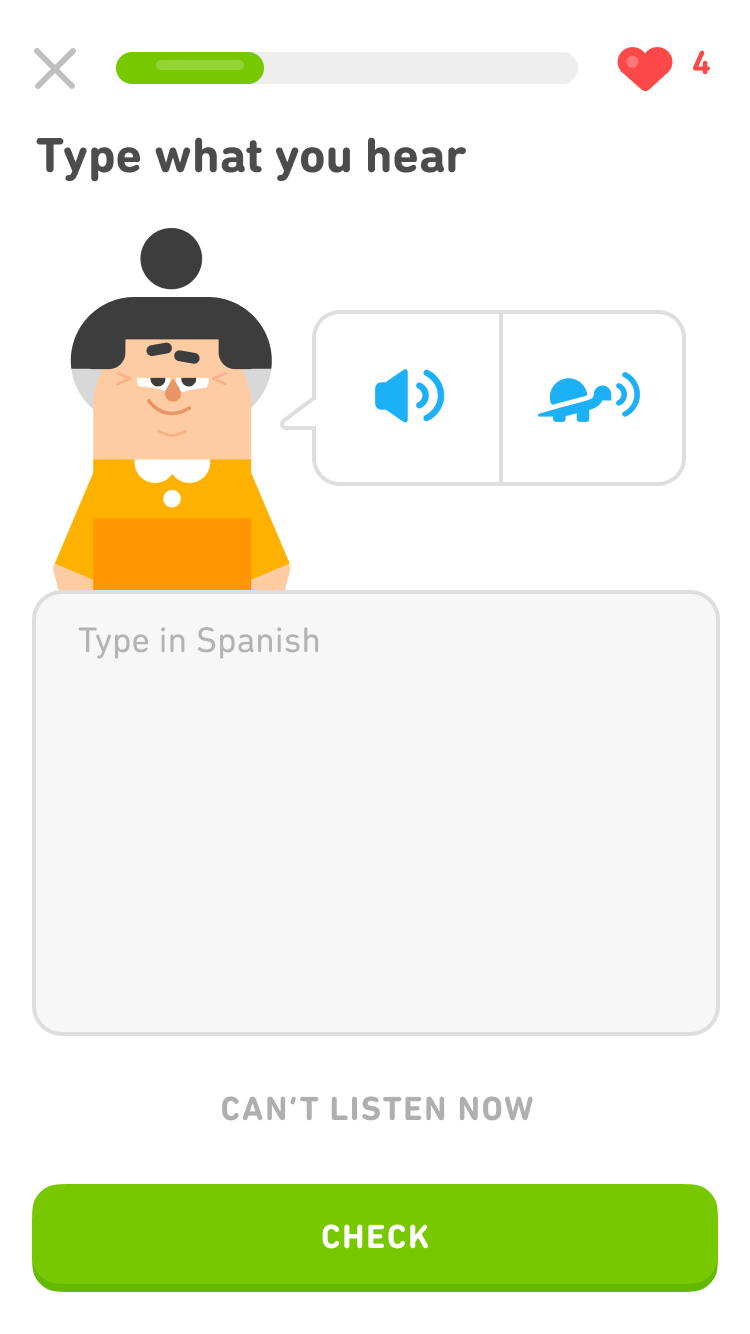 |
- In many courses, new exercises focus on linking the sounds of the language with how they are represented in writing. This is also a good way to pay attention to some of the sounds that don't exist in your own language!
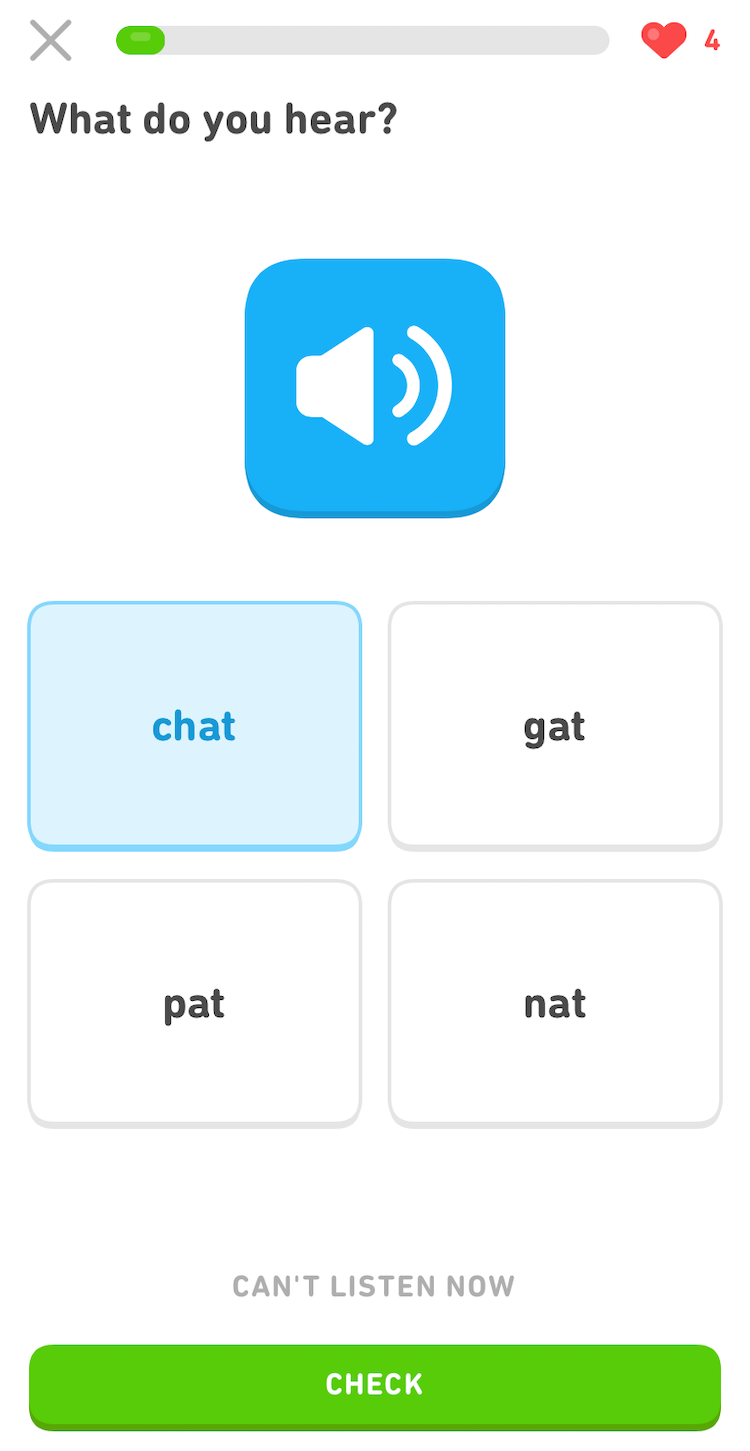 |
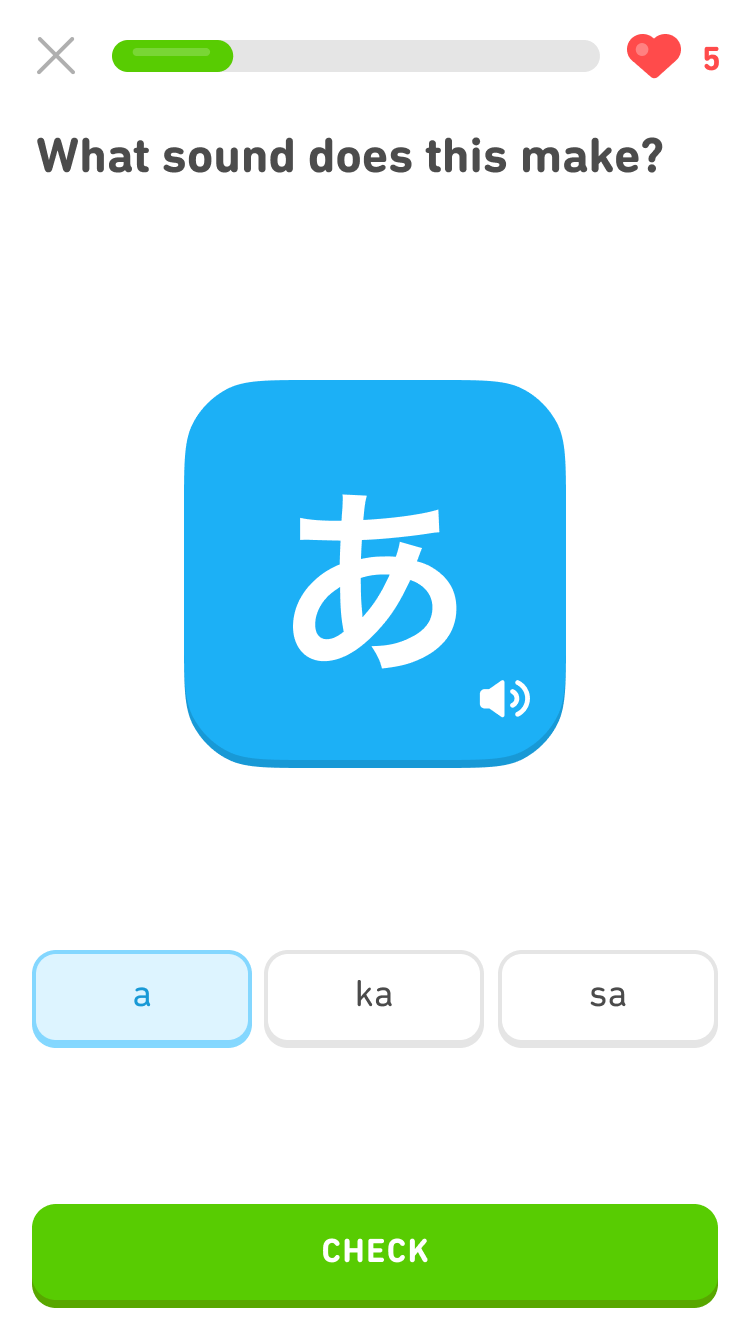 |
-
Stories are great for listening practice, too! Stories include natural speech recorded by voice actors of different ages, genders, and speaking styles—just the kind of variety you'll hear out in the world.
-
Check out the Duolingo Podcast, now available in Spanish, French, and English. The Podcast is great listening practice for intermediate learners, and it's especially useful for learning about culture and accents! There are also full transcripts available for each episode.
-
Duolingo Classes get you practicing conversation with actual speakers and other learners! And of course, half of any good conversation is listening. In these virtual gatherings of language learners, you'll listen to and learn about people from all over the world, all in the language you're learning! Read more about Events here!
Let's talk strategy: How does listening work?
Listening—like reading—is a receptive skill, which means you receive the information in the new language (and someone else did the speaking!). Listening can feel more challenging than reading (the other receptive skill) because after you hear those words once, you can't always go back and listen again. You also can't hear spaces between words like you can see when reading, so good listeners have to be ready to pick words out of a fast stream of speech. But listening to the language you're learning is also rewarding and informative, because you can learn so much through how people talk and not just what they might say.
Listening relies on being able to quickly access words and meanings from memory (a lot like reading!), and strong listening skills also require being sensitive to a lot of different sounds and rhythms in the new language. We don't only speak with an accent in a new language—we also hear with an accent, too! We start learning the sounds of our first language(s) in utero, before we're even born, so learning sounds in a new language involves re-training your brain and your tongue, after decades of fine-tuning your hearing to your own language. Practice with the language's sounds also helps with vocabulary learning and with recognizing the individual words you're hearing, which you have to do fast! That's why learners often feel like the new language is being spoken so much faster than their own language: It takes a lot of mental energy to identify the words you're hearing, without pauses between, while the next words are already being spoken. The faster your brain can look up related vocabulary in the language, the easier listening becomes, so reading can actually help your listening skills! Good listeners also know how the language can change depending on who's talking: What kinds of words, phrases, endings, rhythms, and sounds are used by younger or older speakers, by men versus women, in formal or informal contexts?

Languages can vary dramatically not only in their grammar, but in their sounds, too!
- For example, in English, we often make our voice go up at the end of questions, to show that we're asking something, but making your voice go up or down, higher or lower, doesn't change the meaning of a word: house always means the same thing no matter if our voice goes up ("...house?"), stays flat ("house."), or does anything else ("HOUSE!"). But for many languages, how you change your voice matters a lot! Tone languages are common throughout East Asia, the Americas, and Africa, and in these languages you need to know the tone of each word, its special pattern of your voice going up, or down, or up then down, or down then up, etc.
- Languages can also have pretty different sounds, like the trilled rr in Spanish and Scottish English, clicks like in Xhosa (spoken in South Africa), or the th in English (it's actually a pretty rare sound across the world!).
- Some languages even have different sounds for different speakers; in one dialect of Mixtec, a language from Mexico, there are words that men have to say as "tee" (men say teena for 'dog') and women have to say as "chee" (women say cheena for 'dog'). Learners have to recognize all these sound differences in their new language!
Learning off the field
To really knock it out of the park, find ways to make the most of listening on Duolingo and be sure to incorporate listening practice in your everyday routine!
- In your Duolingo lessons, remember to turn on "Listening exercises," from the settings under your profile.
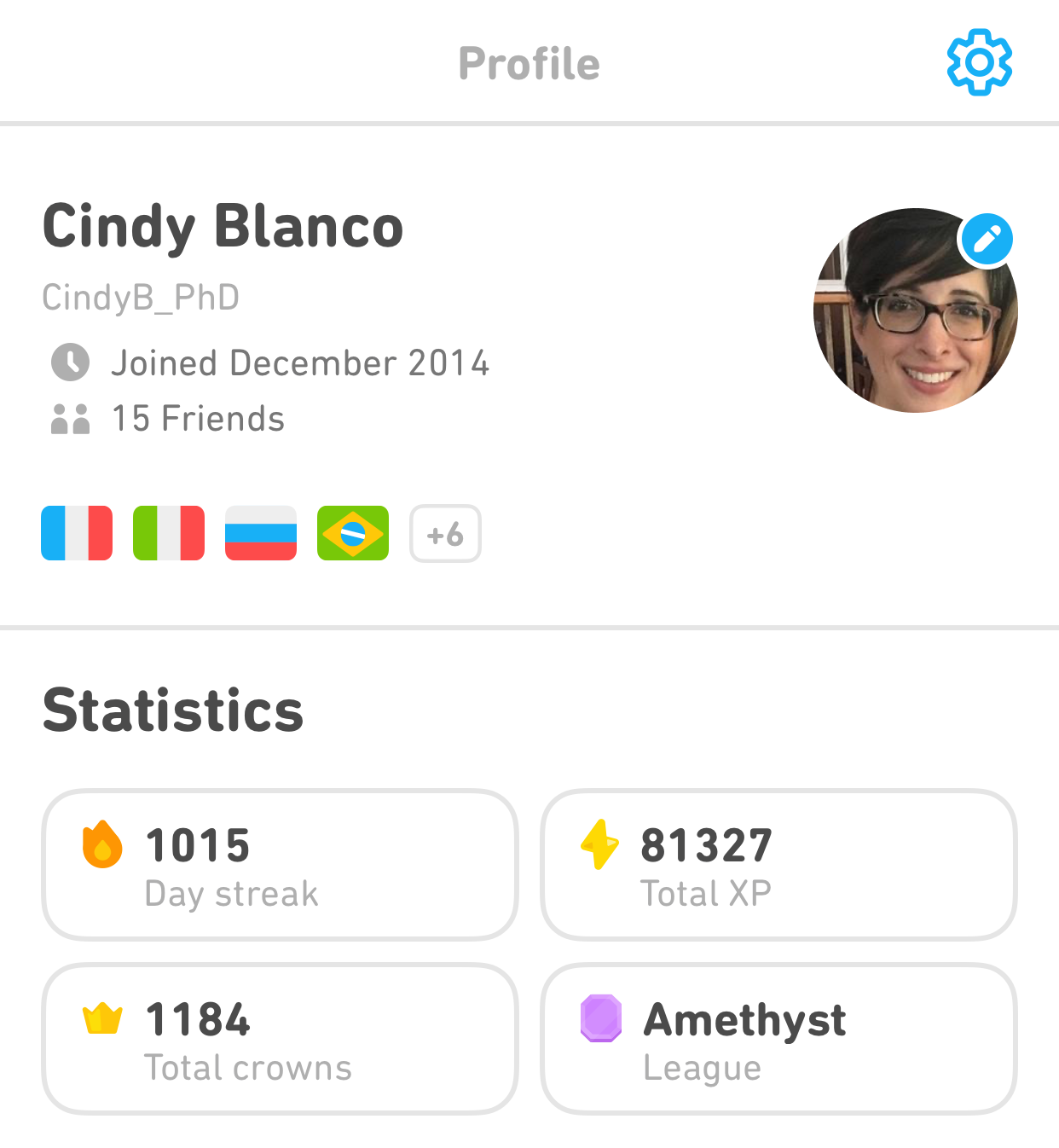 |
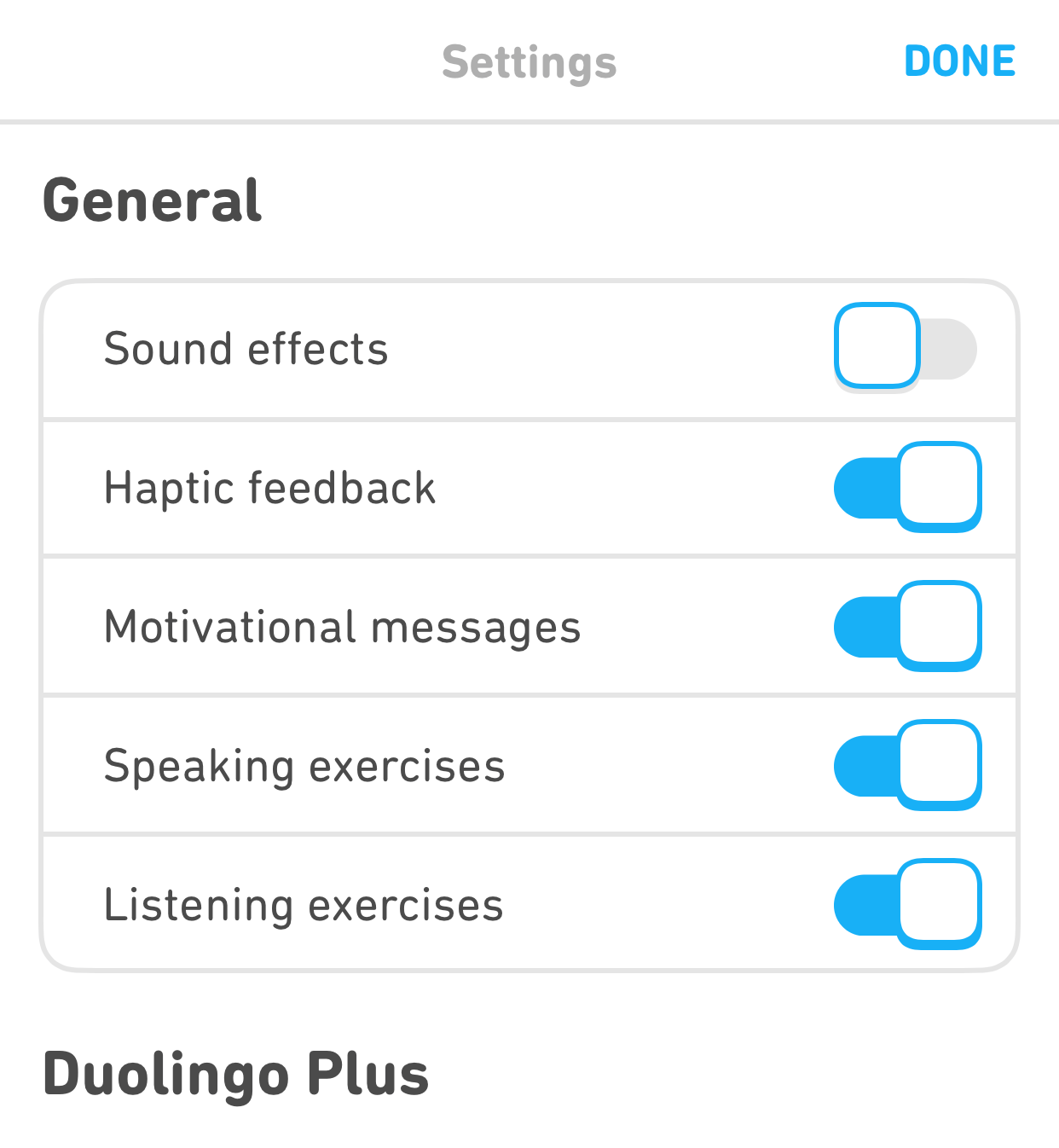 |
- Adapt listening exercises to your needs! Especially when you're starting out, use the turtle button to hear the language slowed down, and replay the words and sentences as many times as you need.
- Get extra listening practice by first listening to an exercise with your eyes closed, before you even see the sentence. If that feels too tough, first listen as normal (eyes open!) and then play the recording a second time with your eyes closed before you respond. Listening without seeing the text helps train your ear to identify the words and even individual sounds in the language.
- Listen to music in the language you're studying. Music is catchy, has lots of repetition, and helps you learn useful phrases in a memorable context. Look up the lyrics to check what you hear!
- Watch shows or movies in the language by switching the audio to the language you're learning. You can check out movies originally made in the language, and you might be able to find options that are dubbed into the language, too.
- Find apps or podcasts in the language. Look for options related to news, sports, history, fashion -- any topic you like to hear about in your own language! Some apps may have helpful videos, too.
For rookie learners, it may feel more comfortable to practice listening to language that's somewhat simpler and has more repetition. Check out YouTube or TikTok videos (with captions!) to find music videos, children's stories and nursery rhymes, and videos on topics you are already familiar with. Any kind of listening helps you get used to the language's rhythm, new sounds, and useful expressions, even if you don't feel comfortable with all the vocabulary or grammar yet.
More veteran learners might want to try out materials created for adult speakers of the language. These can feel more challenging for sure, so start out with listening opportunities that also have transcripts or video to help you along. Even listening to the language without understanding everything is good for learning! Training your ear takes practice and lots and lots of exposure (hearing the language).

Taking your learning to the big leagues
Successful communication always relies on combining your language skills! Now that you know more about how we're helping you become a proficient listener in the language, check back next week to learn about another key language skill: writing!
